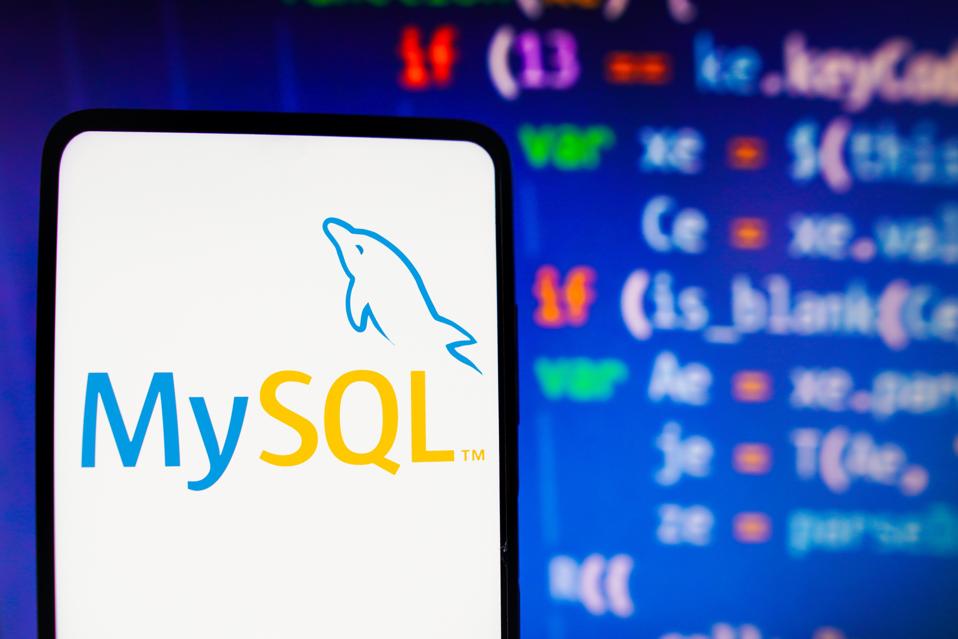
Background
MySQL isn’t just the most popular open-source database in the world; it’s the most popular database full-stop. Analyst estimates place MySQL’s market share at above 40%. The next most popular database is Oracle’s own Oracle Database.
In 2020, Oracle transformed MySQL into a powerhouse fully managed cloud service to meet the demands of online transaction processing (OLTP) and online analytics processing (OLAP) workloads. It named the service MySQL HeatWave.
Since the initial release of HeatWave, Oracle has continued to add increasing levels of functionality at a regular cadence, matching the evolving needs of the enterprise. That evolution continues this week as Oracle announces the latest batch of updates to HeatWave that bring new capabilities for enterprise machine learning, AI-driven automation, and multi-cloud support.
MySQL Heatwave
Before jumping into the new functionality, it’s essential to review what MySQL HeatWave is. HeatWave morphs the MySQL database into a cloud-based, in-memory query acceleration engine. MySQL HeatWave is differentiated from other database services in a few ways:
-
- In-Memory Query Acceleration. HeatWave uses in-memory processing to accelerate analytical queries. This means that it stores data in memory, rather than on disk, which makes it much faster to query and analyze large datasets.
-
- AI-driven automation and system intelligence. Oracle machine-learning models enable HeatWave to make data- and query-driven predictions that adapt to changing workloads without having to reprogram the rules.
-
- AutoML. HeatWave offers native support for creating machine learning models from data under management, eliminating complex and costly data extraction and transformation (ETL) tasks usually required for creating new ML models.
-
- Autopilot Architecture. HeatWave’s Autopilot architecture introduced innovations that automated operation.
-
- Scale-out Data Management. HeatWave’s Scale-Out Data Management supports reloading any amount of data in constant time at network bandwidth speed from OCI’s object store. This allows Heatwave to deliver near-linear scalability.
For all its advanced feature set, MySQL Heatwave is really all about price/performance. Oracle publishes many benchmarks comparing MySQL HeatWave against its closest competitors. There’s no room to go into those benchmarks in-depth here, but I do want to highlight a few.
In the benchmark Ch-benCHmark, 100G, which measures performance in mixed-workload OLTP environments, Oracle demonstrated significant benefit over Amazon Aurora. The benchmark shows HeatWave delivering 18 times better latency than Amazon Aurora. Furthermore, HeatWave does this at over half the price of a comparably sized Aurora instance.
The performance is even more dramatically illustrated when comparing MySQL Heatwave to Snowflake. That comparison shows the overall performance of HeatWave that’s nearly seven times better than Snowflake. Heatwave is also more than five times less expensive.
News: HeatWave & Machine Learning with AutoML
Creating and managing machine learning models is complex. It’s an activity traditionally requiring a complicated cycle where data is extracted, cleaned-up, transformed into a model, and fed into an inference process for analysis. This forces the user to move data from its protected home in the database into a range of third-party tools. MySQL HeatWave simplifies this process with its AutoML features for accelerating the development of machine-learning models.
AutoML allows you to train models and generate inferences and explanations without ever extracting the data from the MySQL database. Beyond simplifying the workflow, HeatWave AutoML enables a fully automated process for creating tuned models in a highly performant environment. In a wide range of machine learning benchmarks, MySQL HeatWave bested Amazon’s Redshift ML training times by an average of more than 25X at 1% of the cost. That’s impressive.
New AutoML Features
Oracle this week added four new capabilities to MySQL HeatWave AutoML, each designed to enable greater value from an enterprise’s machine learning models. The enhancements include a new interactive console, new unsupervised anomaly detection capabilities, a new recommender system, and a new multivariate time series forecasting capability.
One of the most impactful announcements is HeatWave’s new unsupervised anomaly detection capabilities. This new capability allows using ML models to identify anomalous events in a dataset. More practically stated, HeatWave’s unsupervised anomaly detection easily enables fraud detection in financial transactions, issues identified by sensors at the edge or in IoT environments, and cybersecurity incident detection when applied against network traffic or logs. This isn’t a feature available in Snowflake or Redshift ML.
Similarly, HeatWave’s new recommender system dramatically simplifies developing and deploying AI-enabled capabilities. Recommender engines fuel everything from retail and e-commerce product recommendation to movie and music recommendations from streamers and are at the heart of targeted advertising solutions. This is another differentiating feature, as it’s also unavailable in Redshift ML or Snowflake.
Oracle also brings multivariate time series forecasting to HeatWave. The capability allows utilities, for example, to forecast demand or traders to forecast seasonal demand for a given commodity. Again, this is a powerful feature, made more so by its native integration into the HeatWave service.
HeatWave also introduces a new Interactive Console. The console simplifies the usage of ML models along the entire training, prediction, and explanation process. In addition, the new console makes it easy to explore “what if” scenarios from the models and data in the MySQL database, all without any data leaving the security of the database itself. The new console is ideal for a business analyst, allowing the analyst to focus on the data, not the operation.
Automation with MySQL Autopilot
MySQL HeatWave Autopilot is an advanced feature of the MySQL HeatWave service. Autopilot feature uses machine learning algorithms and automation to optimize the performance of the MySQL HeatWave service. It monitors the usage patterns and resource consumption of the MySQL HeatWave service and automatically adjusts the service configuration to maximize performance and reduce costs.
With Autopilot, users no longer need to tune the database manually, reducing the need for specialized database administrators and minimizing the risk of errors. This can save time and resources while ensuring that the MySQL HeatWave service is always running at peak performance.
Oracle is enhancing Autopilot, introducing a new auto shape prediction capability with an explanation for OLTP workloads. This will help drive greater efficiencies for Heatwave customers on Oracle Cloud Infrastructure.
Optimizing HeatWave on AWS
While MySQL HeatWave began as an Oracle Cloud-only offering, Oracle last year expanded the availability to Amazon AWS. The AWS implementation of HeatWave is optimized for the specifics of the AWS infrastructure, tightly integrating with Amazon’s S3, CloudWatch, and PrivateLink features.
MySQL HeatWave improves that integration this week, announcing a new optimized storage layer built on S3 for hybrid columnar representation. When data is loaded from MySQL into HeatWave, a copy is made to the scale-out data management layer built on S3. If reloading is required, the data can be loaded without transforming, resulting in significantly faster recovery times and availability, Oracle said. In addition, data never leaves the AWS cloud, eliminating egress fees.
The new optimized storage layer improves reload performance, yielding impressive results. Oracle provided performance numbers that show that MySQL Heatwave on AWS performs 20 times faster than Amazon Redshift and 16 times faster than Snowflake at a fraction of the price.
Analysis
MySQL HeatWave represents a significant milestone in the evolution of MySQL, positioned as a top contender in the cloud-based analytics market. It’s faster and less expensive than nearly every comparable competing solution. And it’s getting less expensive. Oracle this week announced a new smaller HeatWave shape on OCI that you can buy for as little as $16/month.
As enterprises increasingly leverage machine-learning models to derive value from both existing and time-series data, reducing the complexity and increasing the security of those models are paramount. Oracle continues to build the right set of capabilities to enable those processes. The direct integration of anomaly detection, recommendation, and multivariate time-series forecasting feature are tremendous additions that make it easy to leverage for faster time-to-value from models.
Oracle is leading the way in integrating machine-learning capabilities into its database products, with MySQL HeatWave offering the latest examples. Its approach to AIOps with HeatWave Autopilot and its new interactive console only simplifies the experience for database administrators and application owners. Oracle delivers this with the industry-leading performance we’ve come to expect from the company, at a surprisingly low-cost relative to its competition.
Any enterprise managing cloud data should evaluate Oracle’s MySQL HeatWave. It’s one of the best overall options available.




